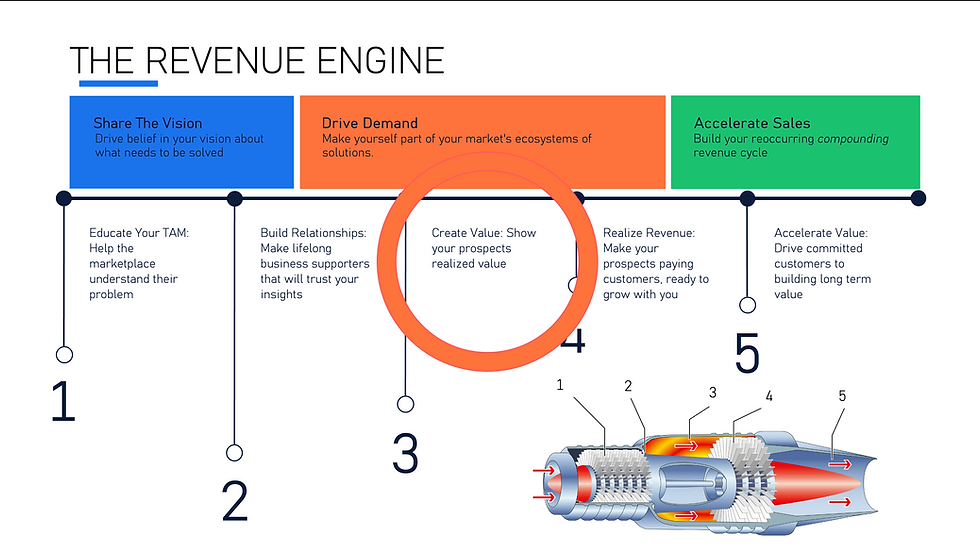The Revenue Engine Basics
- Jason Seals
- Jan 2
- 3 min read
Updated: Jan 15
Startups and small businesses need a revenue engine that grows the business in a self-perpetuating way, producing exponential results. A sales team alone will never be enough. It’s time to design a revenue engine that attracts customers, drives a desire to buy, and grows with every cycle.
A jet engine gathers air, adds fuel, and turns it into propulsion. Impressive—and a little intimidating. How can you apply this concept to your business?
How do you "gather" prospects?
How do you "add fuel" to drive the desire to buy?
How do you turn buyers into "propulsion" for your business?
Let’s break it down at the highest level.

1. Educate Your TAM
"Gathering" implies there are customers already out there, ripe to become buyers. To make prospects ready, you need to offer them something valuable: education about their problem.
Your prospects are likely researching their challenges long before they’re ready to buy. By providing the insights they’re seeking, you position yourself as a trusted resource. Once they understand their problem and recognize your product as the solution, you’ve created the "air" for your engine. Now it’s time to add "fuel."
2. Build Relationships
Here’s where the magic happens. Some might think this is when sales makes a call and closes the deal—or when a digital CTA seals the opportunity. Not so fast. Today’s buyers need certainty before they commit their hard-won budget.
This is when sales reaches out to build trust. Whether it’s through digital interactions or personal connections, your sales team needs to act as a trusted friend and advisor. Unless your product offers instant value with no changes required (think candy bars), your customers will likely need to adjust their workflows or habits. Building trust ensures they’ll see you as the partner to guide them through those changes.
3. Create Value
Help your prospects experience value even before they buy. Freemium models, trials, or samples are proven ways to achieve this—and there’s always room to innovate.
Encourage prospects to incorporate a little of your product into their daily operations. Make their lives and businesses better in measurable ways. The goal? Make them realize they can’t imagine functioning without you.
4. Realize Revenue
With "air" and "fuel" in place, all you need is a spark to ignite the engine. It’s time to close the sale.
At this point, your prospects have a foundation of knowledge, have integrated your product into their routines, and have seen firsthand the value you bring. Signing on the dotted line becomes a no-brainer. Congratulations—you’ve gained a new customer!
5. Accelerate Value
This is where the magic scales. Make sure your customers integrate your product into as many parts of their business as possible. Demonstrate exactly how you’re helping them achieve their goals and improve their bottom line.
When customers see the full extent of your value, they’ll be ready to explore more of your offerings. That’s when you educate them on additional products, deepen relationships, and co-create new value. From signing bigger contracts to accelerating growth, your customers will fuel your business to new heights.
Building a revenue engine isn’t just about driving sales—it’s about creating a cycle that attracts, engages, and grows customers over time. With the right strategy, your business can achieve exponential growth and truly take off.




Comments